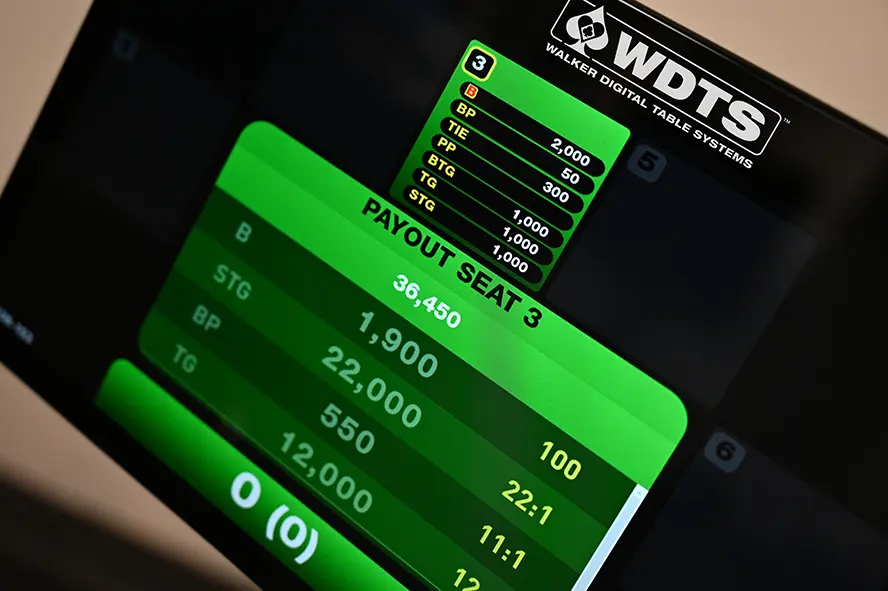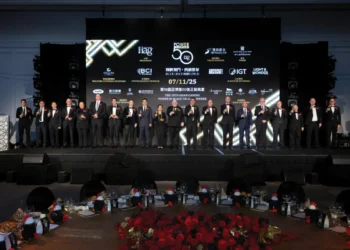Walker Digital Table Systems, a leading supplier of smart table solutions to the industry, explains why RFID chip technology is so important to the modern-day casino.
As casino operators look to bring intelligence to table game operations, many are faced with a familiar question: cameras, hybrid systems (cameras and RFID) or RFID? Camera systems are riding the AI hype, but let’s not confuse generative AI with the machine learning behind computer vision – they’re not the same. Recognition technology isn’t new, and its core limitations still show up on the floor. When accuracy, accountability and operational integrity matter, systems designed with RFID at the core, not just layered in, simply deliver more.
And not just any RFID – PJM 3.0, the latest evolution of Phase Jitter Modulation, is redefining what’s possible in chip intelligence. Unlike hybrid systems that bolt RFID onto camera-driven frameworks, PJM 3.0 puts RFID at the core. That means every chip move is logged, every transaction verified and every player accurately rated, without relying on line of sight or image interpretation. It’s not an enhancement. It’s a fundamentally different architecture, uniquely secure by design and built for precision at scale.
 Consider a camera system with 95% accuracy in chip recognition. That may sound high at first glance, but this figure applies to the average of individual detection events – not a player’s session. In a typical session, players recycle their bankroll many times. Each cycle introduces a new opportunity for error and reduces cumulative accuracy. Over just six passes, the likelihood of consistent accuracy drops to about 73.5%, meaning there’s a 26.5% chance of rating errors, which can significantly distort player valuation.
Consider a camera system with 95% accuracy in chip recognition. That may sound high at first glance, but this figure applies to the average of individual detection events – not a player’s session. In a typical session, players recycle their bankroll many times. Each cycle introduces a new opportunity for error and reduces cumulative accuracy. Over just six passes, the likelihood of consistent accuracy drops to about 73.5%, meaning there’s a 26.5% chance of rating errors, which can significantly distort player valuation.
Moreover, detection and valuation errors compound differently, with valuation (determining chip denomination) often being less reliable than mere detection, especially in varying operating conditions. As compounding errors decay accuracy, casinos risk under-rating strong players, misallocating comps or missing AML triggers. The key isn’t just improving per-event accuracy but implementing systemic safeguards – like RFID item-level validation – to ensure player tracking integrity across full sessions that prevent silent compounding errors.
What cameras try to see, RFID already knows
Cameras interpret chip movements and human actions, but interpretation isn’t certainty. Shadows, glare, blocked views and table design limitations all degrade accuracy and performance. Even with Machine Learning AI, cameras can’t verify what’s happening beneath a player’s hands, under the table or distinguish and control individual chips.
RFID PJM 3.0 doesn’t guess – it tracks. Every chip has a unique ID made permanent during manufacturing with validity controlled by the casino. Every movement is validated and logged in real time. This level of certainty transforms RFID from a support tool into the digital backbone of a smart casino.
Cameras can monitor, RFID enables control
With PJM 3.0, operators can assign, restrict, activate and trace every chip in play. Want to prevent self-excluded or over-the-limit players from participating? RFID enforces it in real time. Need to differentiate promotional chips from cashable ones? Done. Require chip-level authentication before a wager is accepted? Restrict any chip to a specific wager? It’s built in.
Ownership, location, denomination, promotional value, bonus features and validity are all programmable and trackable – by casino, zone, pit, table, wager, time and expiration, player and player tier. This level of authority is critical in an era of tighter compliance, competitive pressures and rising expectations.
 More than security: Enabling smarter gaming decisions
More than security: Enabling smarter gaming decisions
Beyond security and compliance, RFID PJM 3.0 enables innovation from real-time analytics and in-game bonuses to NFC accessed wallets and team based asynchronous tournaments. PJM 3.0 supports modern features natively.
From the floor to the cage, RFID delivers an auditable, transparent record of every chip movement – enabling chip-level control of AML programs, internal audits and player rating systems with hard data, not interpreted video footage.
The Bottom Line
Camera systems have their place, but they fall short of delivering the certainty, control and systemic intelligence that Walker Digital’s PJM 3.0 RFID brings to the table. It’s not a futuristic promise, it’s live on some of the world’s most advanced and demanding casino floors. RFID is not an upgrade, it’s a transformation.
For more information, please visit wdtablesystems.com.



























